The world is a strange, wonderful and sometimes frightening place. We present to you the most unusual places on Earth, which are the result of a whim of Mother Nature or the work of human hands.
20. Spotted Lake, British Columbia, Canada
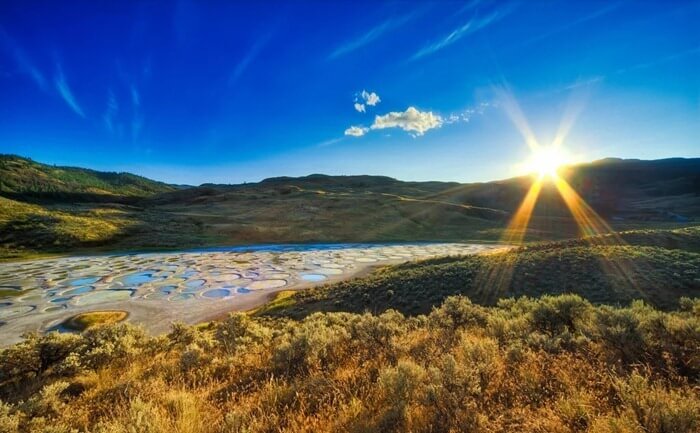 The spotted lake has long been revered by the Okanagan Indians, and it's easy to see why they consider it sacred. In summer, part of the lake's water evaporates, which is why small colored mineral spots are formed, on which you can even walk. This lake contains the largest amount of various minerals in the world.
The spotted lake has long been revered by the Okanagan Indians, and it's easy to see why they consider it sacred. In summer, part of the lake's water evaporates, which is why small colored mineral spots are formed, on which you can even walk. This lake contains the largest amount of various minerals in the world.
19. Salar de Uyuni salt flat, Bolivia
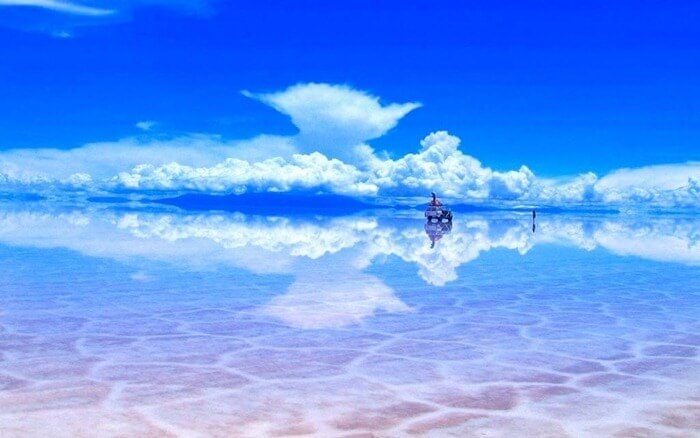 This is the world's largest "salt pan". And when a thin film of water collects on the surface of a dried salt lake, it becomes the world's largest natural mirror.
This is the world's largest "salt pan". And when a thin film of water collects on the surface of a dried salt lake, it becomes the world's largest natural mirror.
18. Lake Natron, Tanzania
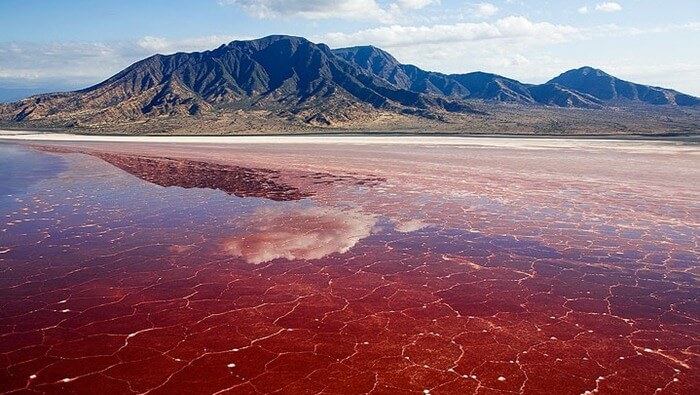 Looking for the strangest places in the world? How about this terrifying lake? Animals that die in it turn into statues through calcification. The presence of huge volumes of sodium bicarbonate ensures that all organisms that have died in the lake turn into mummies.
Looking for the strangest places in the world? How about this terrifying lake? Animals that die in it turn into statues through calcification. The presence of huge volumes of sodium bicarbonate ensures that all organisms that have died in the lake turn into mummies.
17. Devil's Bridge, Germany
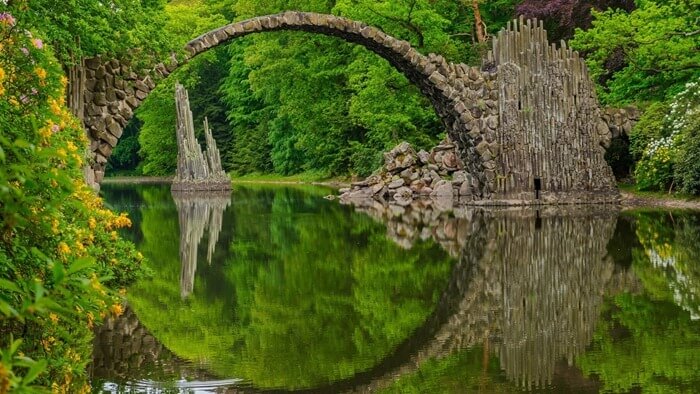 Next in the ranking of the strangest places on the planet is the bridge, which is famous for its unique constructive accuracy. The bridge itself and its reflection merge into a perfect circle, regardless of the viewing angle.
Next in the ranking of the strangest places on the planet is the bridge, which is famous for its unique constructive accuracy. The bridge itself and its reflection merge into a perfect circle, regardless of the viewing angle.
16. Bridge of Giants, Northern Ireland
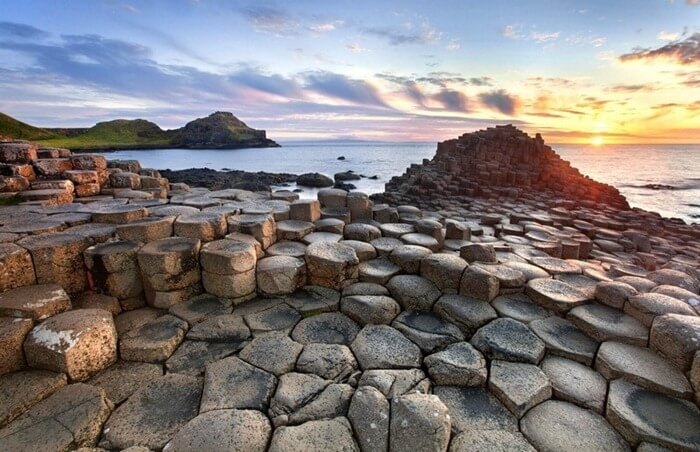 Sixty million years ago, an erupting volcano "spawned" from its bowels a mass of molten basalt, which then solidified and shrank in volume. As it cooled, cracks appeared in it, which can be seen today. This UNESCO World Heritage Site has about 37,000 polygonal columns, and they are perfectly geometric. According to local legend, they were created by the legendary hero Finn McCool, who was preparing to fight the giant Goll.
Sixty million years ago, an erupting volcano "spawned" from its bowels a mass of molten basalt, which then solidified and shrank in volume. As it cooled, cracks appeared in it, which can be seen today. This UNESCO World Heritage Site has about 37,000 polygonal columns, and they are perfectly geometric. According to local legend, they were created by the legendary hero Finn McCool, who was preparing to fight the giant Goll.
15. Dead Vlei, Namibia
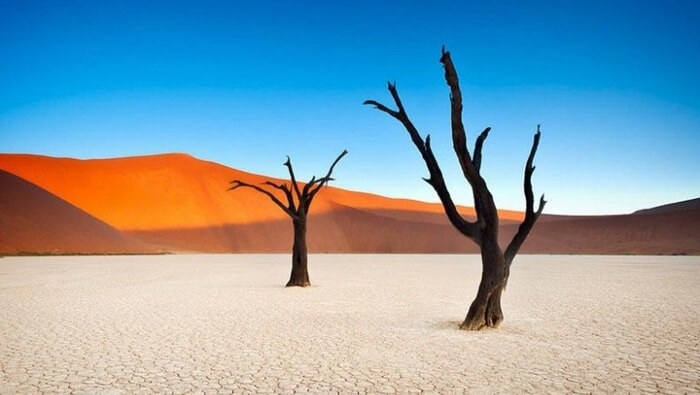 A surreal sight is a sun-drenched dead forest in a dry oasis surrounded by rusty orange giant sand dunes. The lack of water forces the roots of trees to creep out, right onto the sand in search of the slightest droplets of moisture. This is a real struggle for life!
A surreal sight is a sun-drenched dead forest in a dry oasis surrounded by rusty orange giant sand dunes. The lack of water forces the roots of trees to creep out, right onto the sand in search of the slightest droplets of moisture. This is a real struggle for life!
14. Green Lake, Austria
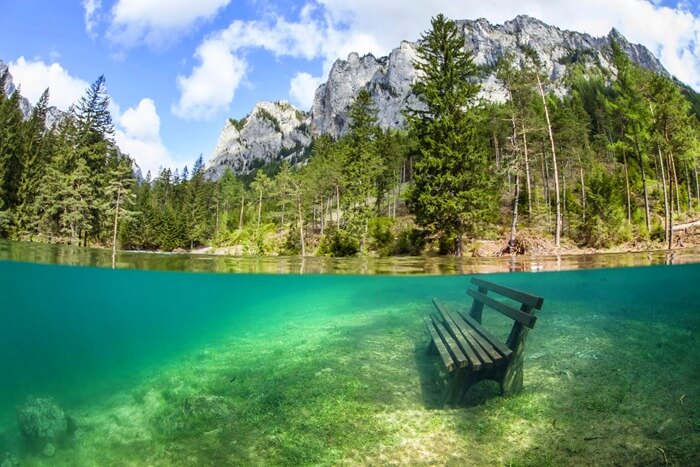 At an altitude of 776 meters in the Alps there is a lovely picturesque place, in the center of which there is a small lake. But in April, the park, which at first glance seems to be, changes dramatically. Powerful streams of water that roll down the slopes of the mountains fill the gorge with clean water. And beneath it, benches, flower beds, bridges, lawns, trees and bushes disappear. It turns out a real underwater park with a depth of 2 to 20 meters.Well, divers need somewhere to rest too.
At an altitude of 776 meters in the Alps there is a lovely picturesque place, in the center of which there is a small lake. But in April, the park, which at first glance seems to be, changes dramatically. Powerful streams of water that roll down the slopes of the mountains fill the gorge with clean water. And beneath it, benches, flower beds, bridges, lawns, trees and bushes disappear. It turns out a real underwater park with a depth of 2 to 20 meters.Well, divers need somewhere to rest too.
13. Pamukkale, Turkey
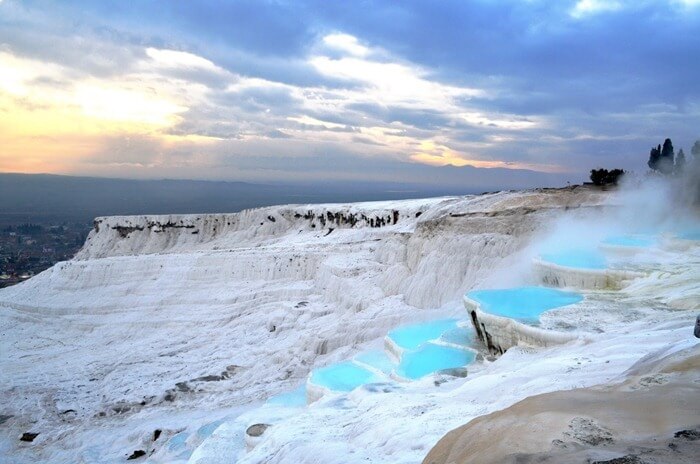 The remarkable UNESCO World Heritage Site is located in southwestern Turkey. This is Pamukkale (Cotton Palace), around which are the ancient ruins of Hierapolis, once a great city. Water cascades from natural sources, rich in calcium bicarbonate, flow down the white travertine terraces and form stunning thermal pools with snow-white surfaces, which are unparalleled in the world.
The remarkable UNESCO World Heritage Site is located in southwestern Turkey. This is Pamukkale (Cotton Palace), around which are the ancient ruins of Hierapolis, once a great city. Water cascades from natural sources, rich in calcium bicarbonate, flow down the white travertine terraces and form stunning thermal pools with snow-white surfaces, which are unparalleled in the world.
12. Tunnel of love, Ukraine
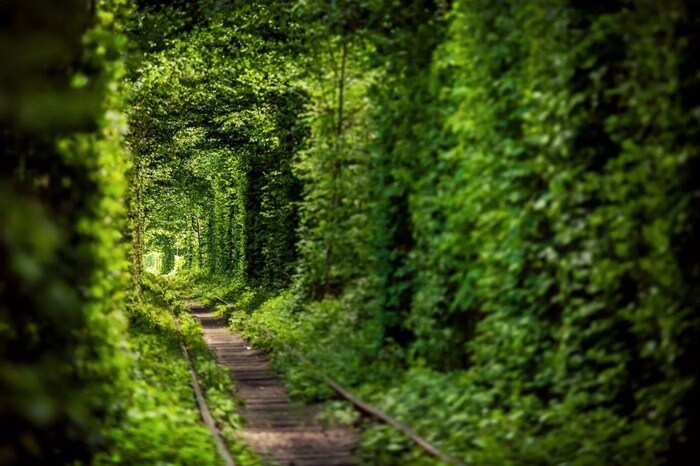 On one of the sections of the industrial railway near the Ukrainian village of Klevan, there is a green tunnel formed by woven branches of trees and bushes. It seems that it was created as a decoration for some beautiful fairy tale.
On one of the sections of the industrial railway near the Ukrainian village of Klevan, there is a green tunnel formed by woven branches of trees and bushes. It seems that it was created as a decoration for some beautiful fairy tale.
There is a belief that if a couple of lovers pass through this tunnel and make a wish, then it will certainly come true.
11. Lake Hillier, Western Australia
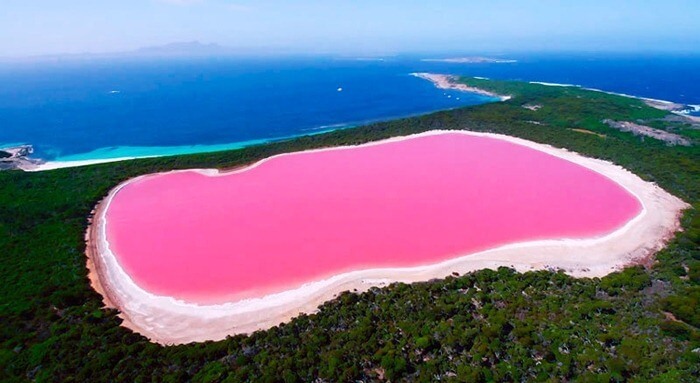 This wonderful lake was discovered in 1802. Its deep pink color persists all year round, which, according to some scientists, is due to the high salinity of the water in combination with the presence of salty algae known as Dunaliella brackish and pink bacteria - halobacteria.
This wonderful lake was discovered in 1802. Its deep pink color persists all year round, which, according to some scientists, is due to the high salinity of the water in combination with the presence of salty algae known as Dunaliella brackish and pink bacteria - halobacteria.
10. Munsell Sea Forts, England
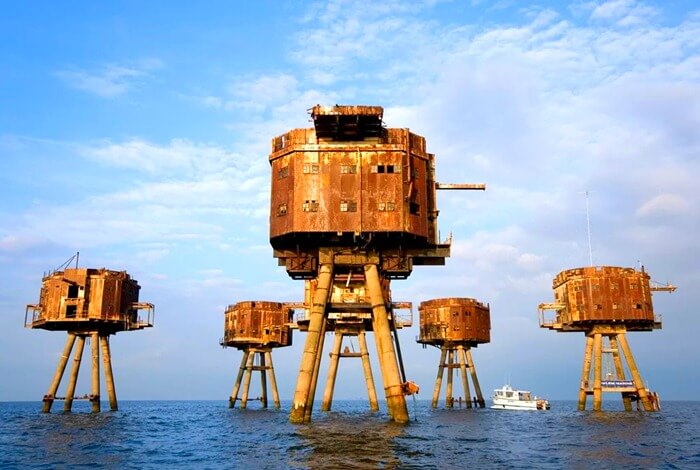 In the waters of the Thames and Mersey, the remains of sea forts built to contain German air raids during World War II stand on stilts.
In the waters of the Thames and Mersey, the remains of sea forts built to contain German air raids during World War II stand on stilts.
After the war, a group of pirate radio operators chose the forts, and in 1967 they were kicked out of there by retired Colonel Paddy Roy Bates. Having occupied one of the forts - Rafs Tower - he proclaimed the creation of his own independent state called the Principality of Sealand. And so that everything was "grown up" Bates took the name Roy I Bates, developed a constitution and came up with national symbols of Sealand. He moved his family and friends to the platform, after which a legal confrontation between the "self-proclaimed king of lemurs", that is, the newly-minted prince, with the British government began. And the result was not in favor of the government.
As a result, Sealand successfully existed until 2006, and then, due to a short circuit in the generator and the resulting fire, the principality burned to the ground. The restoration would have taken a huge amount, and its owner decided to put the miniature state up for sale. Nobody bought it yet.
The rest of the forts had a less intense and bright fate. They look like an army of rusty but merciless robots decided to mount an invasion from the sea, and then stopped on their way.
9. Seven Giants, Russia
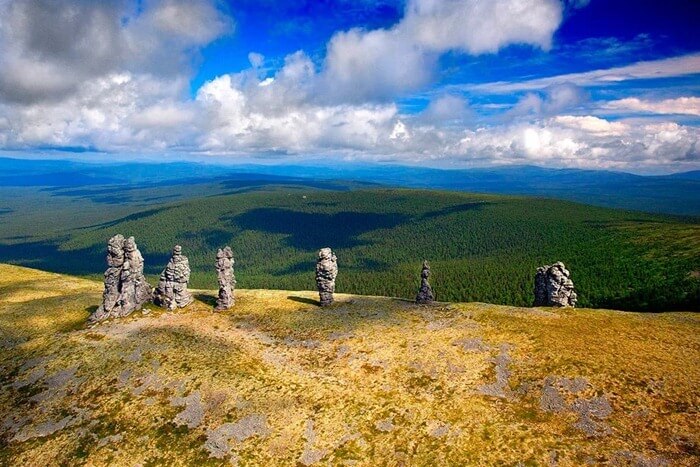 Siberia has one of the most unusual places on the planet. It is known as the "Seven Giants" and "Mansi Dummies". These huge stone pillars of weathering from 30 to 42 meters in height are located west of the Urals, on the Man-Pupu-ner mountain. They were created not by human hands, but by ice and snow over the years.
Siberia has one of the most unusual places on the planet. It is known as the "Seven Giants" and "Mansi Dummies". These huge stone pillars of weathering from 30 to 42 meters in height are located west of the Urals, on the Man-Pupu-ner mountain. They were created not by human hands, but by ice and snow over the years.
Legend has it that the monoliths were once giant brothers, and Torev (Bear) was their leader. Hearing about the beauty of the daughter of the Mansi leader, the giants went to war against the tribe in order to seize the beauty by force. But the good spirits gave the chief's son a magic weapon - a fiery sword and shield, with which he turned giants into stone. Dying, one of them threw aside a tambourine, which also turned to stone and turned into the top of the Koyp ("Drum").
8. Monticello Dam, California
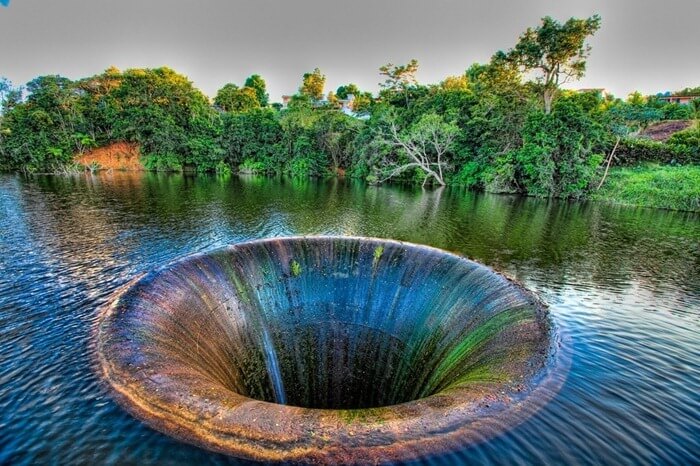 Lakes, as a rule, do not have a giant "drain" that sucks water into some kind of cavernous invisible drain. However, the artificial lake of Berries is special.
Lakes, as a rule, do not have a giant "drain" that sucks water into some kind of cavernous invisible drain. However, the artificial lake of Berries is special.
When heavy rains create an excessive pressure of water, a hole appears in the water surface of the lake, creating a fantastically beautiful and strange hole, which you hardly want to fall into.
The unique design of the spillway, officially known as the "glory hole", allows an excess of 1370 cubic meters of water to pass through in one second. The depth of the drain is 21 meters.
7. Ra Poletta Caves, New Mexico
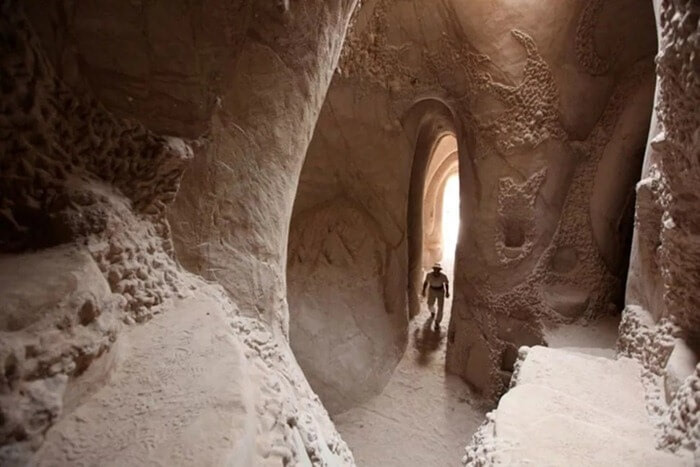 Since 1990, a man named Ra Paulette took a shovel and a pickaxe and walked into the desert in New Mexico to make caves of fabulous beauty from the pliable sandy mountains. The caves he dug by hand include underground galleries decorated with intricate designs. They come to the mind of the creator right during the work.
Since 1990, a man named Ra Paulette took a shovel and a pickaxe and walked into the desert in New Mexico to make caves of fabulous beauty from the pliable sandy mountains. The caves he dug by hand include underground galleries decorated with intricate designs. They come to the mind of the creator right during the work.
6. Blood Falls, Antarctica
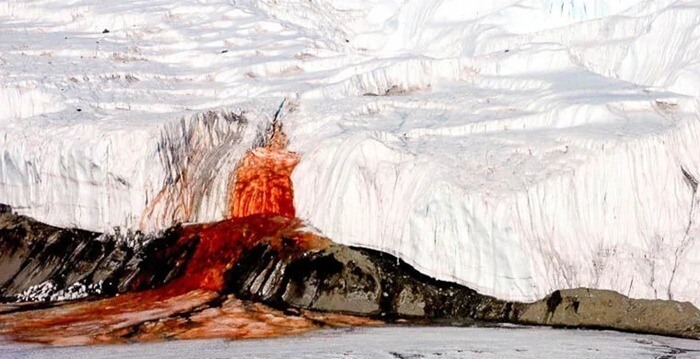 "Is this Antarctic glacier bleeding?" This is a perfectly reasonable question when you look at the Taylor Glacier, east of the Ross Ice Shelf. A red liquid flows down it, staining the ice in its path, but there is a perfectly reasonable explanation for this. The red matter is highly saline, microbial water that has accumulated under a glacier for millions of years. As the water reaches the surface, it is saturated with oxygen, resulting in a rusty waterfall worthy of entering the top 20 strangest places on earth.
"Is this Antarctic glacier bleeding?" This is a perfectly reasonable question when you look at the Taylor Glacier, east of the Ross Ice Shelf. A red liquid flows down it, staining the ice in its path, but there is a perfectly reasonable explanation for this. The red matter is highly saline, microbial water that has accumulated under a glacier for millions of years. As the water reaches the surface, it is saturated with oxygen, resulting in a rusty waterfall worthy of entering the top 20 strangest places on earth.
5. Merry cemetery, Romania
 For most people, death is a terrible and sad event. However, some believe that remembering people who have gone to another world should be done with a smile, not with tears.
For most people, death is a terrible and sad event. However, some believe that remembering people who have gone to another world should be done with a smile, not with tears.
An example of a non-standard approach to death is the cemetery located in the Romanian village of Sepynca. Each of the 800 multi-colored tombstones is marked with a funny anecdote from the life of a person buried under it, and, often, contains details of his death, accompanied by a funny illustration.
The colors of the wooden tombstones have a certain meaning.
- Green has become a symbol of life.
- Black has traditionally represented death.
- Yellow is a symbol of fertility.
- Red symbolized passion.
And blue was originally the dominant color chosen by the artist Stan Jon Patras - the author of the first "cheerful" tombstone.
Fragmented epigraphs and vibrant colors make this cemetery one of the most extraordinary places in the world.
4. Badab-e-Surt, Iran
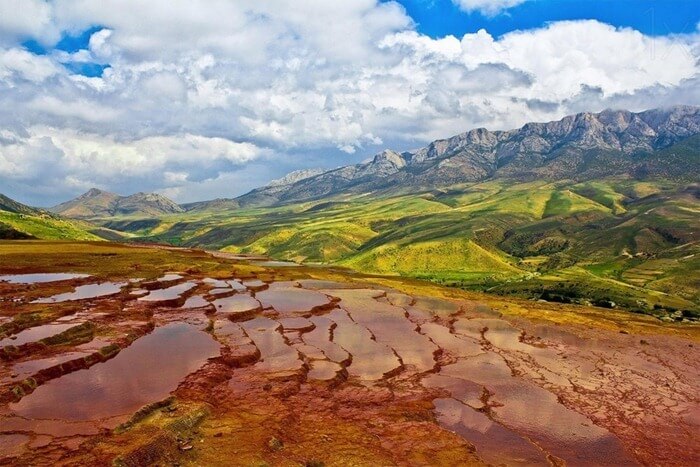 These beautiful travertine terraces in northern Iran are an incredible natural phenomenon that has formed at an altitude of 1,840 meters above sea level for thousands of years. Travertine is a type of limestone formed from calcium sludge in running water.
These beautiful travertine terraces in northern Iran are an incredible natural phenomenon that has formed at an altitude of 1,840 meters above sea level for thousands of years. Travertine is a type of limestone formed from calcium sludge in running water.
The unusual reddish color of the terraces is due to the high iron oxide content in one of the springs.
3. Nazca Lines, Peru
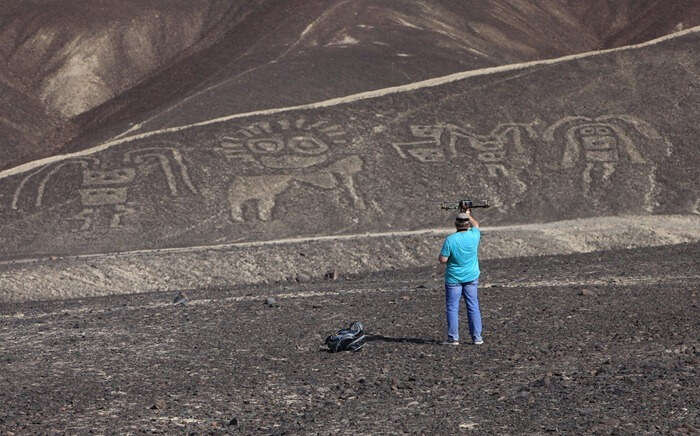 Animal figures and geometric designs engraved on the Nazca plateau in Peru are one of South America's greatest mysteries. Who created them and why? Scientists have no answer, only guesses.
Animal figures and geometric designs engraved on the Nazca plateau in Peru are one of South America's greatest mysteries. Who created them and why? Scientists have no answer, only guesses.
The images are clearly visible only from the air or from an observation tower located next to the highway. The outline of each of these geoglyphs (some of them up to 200 m long) is drawn using a single continuous line.
2. Socotra Island, Yemen
 This island, separated more than six million years ago from mainland Africa, looks like a sci-fi movie set. Socotra's incredible and unique biodiversity means there are plants and trees not found anywhere else in the world. The ancient and twisted dragon tree and mushroom tree look especially strange.
This island, separated more than six million years ago from mainland Africa, looks like a sci-fi movie set. Socotra's incredible and unique biodiversity means there are plants and trees not found anywhere else in the world. The ancient and twisted dragon tree and mushroom tree look especially strange.
1. Island of cats, Japan
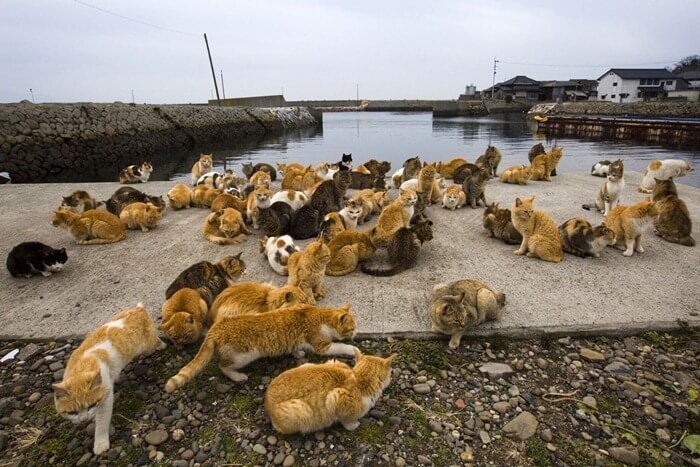 There is a joke that in fact the world is ruled by cats. Well, in every joke, as you know, there is only a fraction of a joke. The seals managed to capture one island.
There is a joke that in fact the world is ruled by cats. Well, in every joke, as you know, there is only a fraction of a joke. The seals managed to capture one island.
A short ferry ride from the east coast of Japan takes you to Tashiro Island, home to about 100 people and many, many cats.
Originally, cat breeding on the island was encouraged as the locals made silk and mice were a natural enemy of silkworms. Local fishermen believed that the fuzzies brought them good luck, and the island even has a cat temple as well as a newly built cat-shaped hollow (a tourist attraction). It goes without saying that dogs are not allowed on the island.
Unbelievable and strange places of the planet on video

